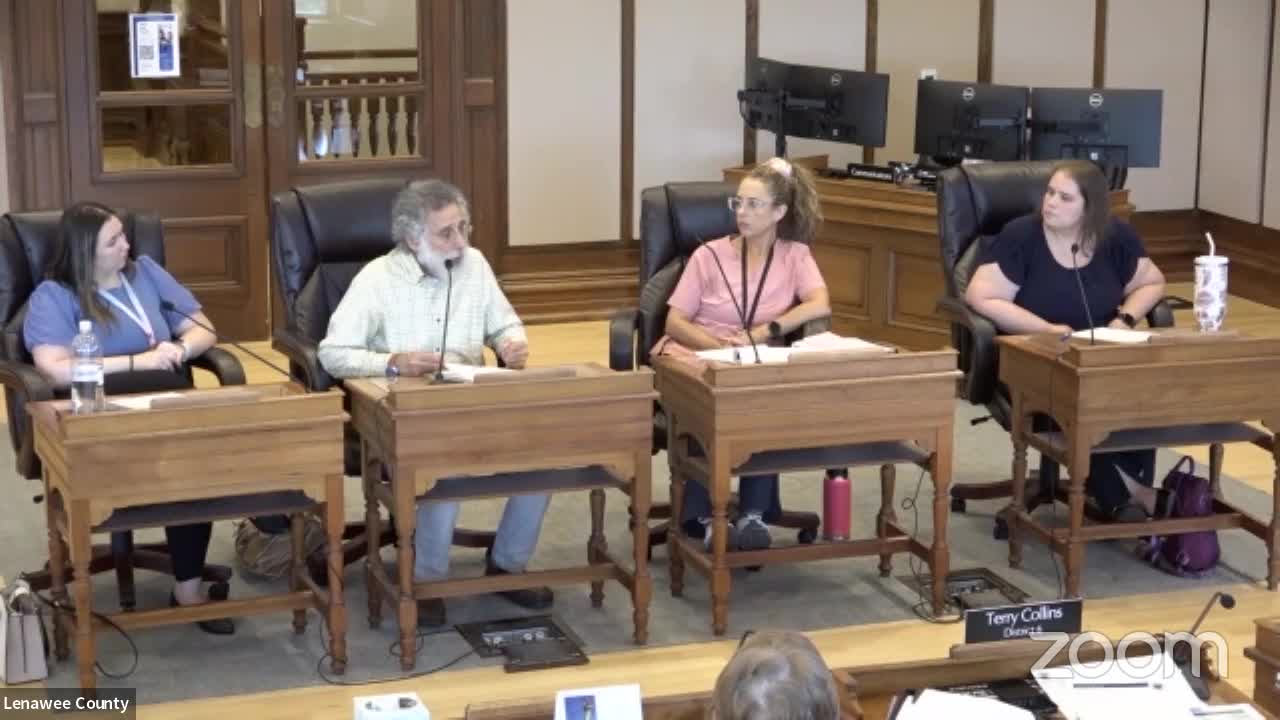COVID Outbreaks Surge as New Variants Emerge
July 17, 2024 | Lenawee County, Michigan

This article was created by AI summarizing key points discussed. AI makes mistakes, so for full details and context, please refer to the video of the full meeting. Please report any errors so we can fix them. Report an error »

During a recent government meeting, officials addressed the ongoing challenges posed by COVID-19, highlighting a resurgence of cases across various regions, including the Midwest, California, and the South. Despite a slight decrease in death rates during the summer, an average of 1,500 deaths per week continues to be reported, underscoring the virus's persistent threat. The discussion revealed that approximately 75,000 people are expected to die from COVID-19 annually, emphasizing the need for continued vigilance.
The meeting also focused on the virus's mutations, particularly the current omicron variant and its subtypes, including LB.1, AP.1, KP.2, and KP.3. Officials noted that vaccine uptake remains low among vulnerable populations, with only 18% of immunocompromised individuals and 20% of seniors over 65 having received their most recent COVID-19 shot. The situation is further complicated by access issues to antiviral treatments like Paxlovid, which can cost patients up to $1,600, creating barriers for those without insurance.
Concerns were raised about the potential for long COVID, which affects approximately 8-10% of those infected, leading to debilitating symptoms such as chronic fatigue and cognitive difficulties. The meeting emphasized the importance of preventive measures, including vaccination and masking in crowded settings, as the virus continues to mutate and evade immunity.
In addition to COVID-19, officials discussed the emergence of the H5N1 bird flu variant, which has been spreading among bird populations and has recently affected cattle. While human cases remain rare and mild, there is apprehension about the potential for the virus to mutate and pose a greater threat to human health. Surveillance efforts, including wastewater monitoring, are being implemented to track both COVID-19 and H5N1, as public reporting of infections has declined.
Overall, the meeting highlighted the ongoing public health challenges posed by both COVID-19 and emerging infectious diseases, stressing the need for continued public health initiatives and community awareness.
The meeting also focused on the virus's mutations, particularly the current omicron variant and its subtypes, including LB.1, AP.1, KP.2, and KP.3. Officials noted that vaccine uptake remains low among vulnerable populations, with only 18% of immunocompromised individuals and 20% of seniors over 65 having received their most recent COVID-19 shot. The situation is further complicated by access issues to antiviral treatments like Paxlovid, which can cost patients up to $1,600, creating barriers for those without insurance.
Concerns were raised about the potential for long COVID, which affects approximately 8-10% of those infected, leading to debilitating symptoms such as chronic fatigue and cognitive difficulties. The meeting emphasized the importance of preventive measures, including vaccination and masking in crowded settings, as the virus continues to mutate and evade immunity.
In addition to COVID-19, officials discussed the emergence of the H5N1 bird flu variant, which has been spreading among bird populations and has recently affected cattle. While human cases remain rare and mild, there is apprehension about the potential for the virus to mutate and pose a greater threat to human health. Surveillance efforts, including wastewater monitoring, are being implemented to track both COVID-19 and H5N1, as public reporting of infections has declined.
Overall, the meeting highlighted the ongoing public health challenges posed by both COVID-19 and emerging infectious diseases, stressing the need for continued public health initiatives and community awareness.
View full meeting
This article is based on a recent meeting—watch the full video and explore the complete transcript for deeper insights into the discussion.
View full meeting
